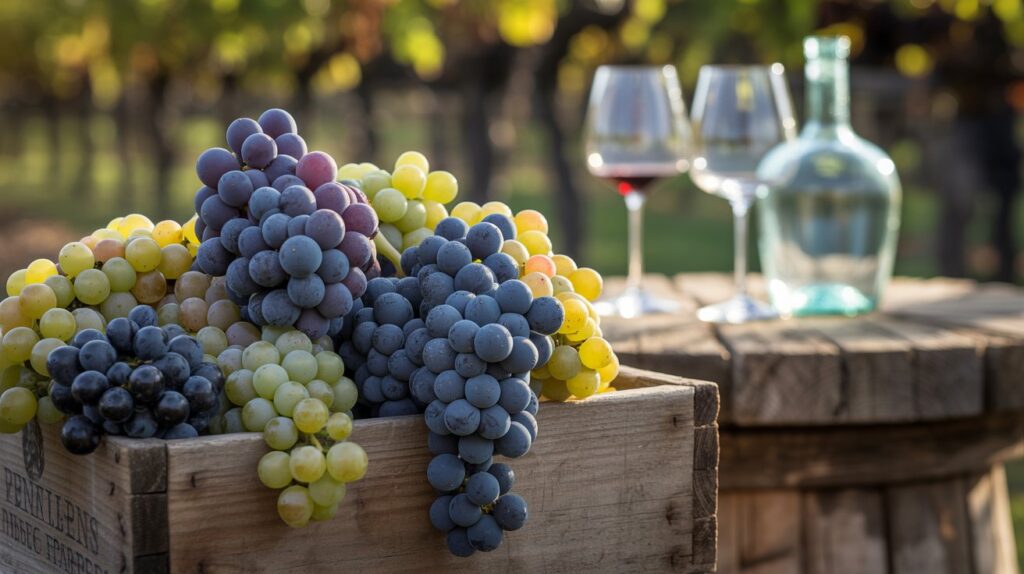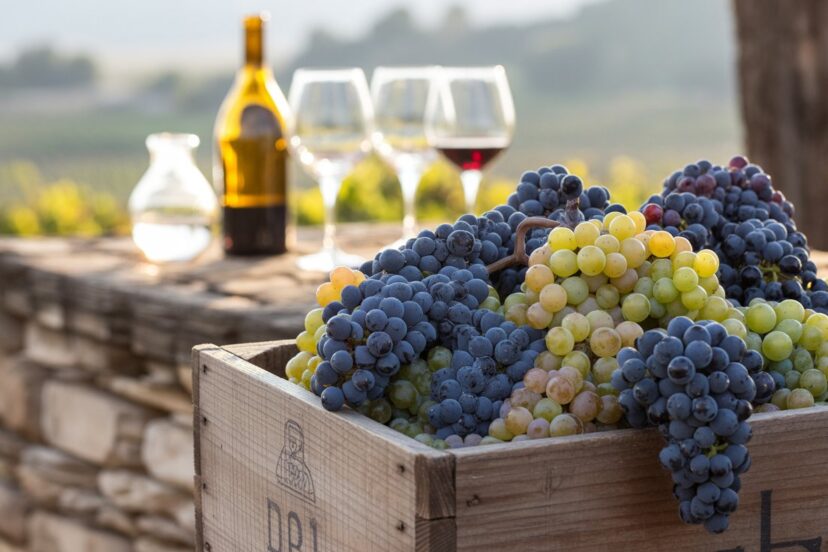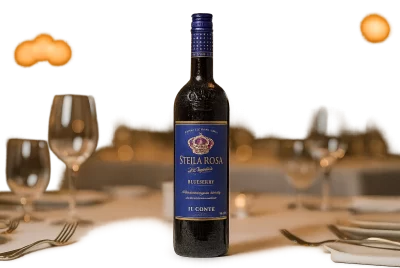Hidden Gems: Rare Wine Grapes Worth Discovering
Post Disclaimer
*We may earn a commission for purchases made using our links. Please see our disclosure to learn more.
Imagine walking through a vineyard where the vines bear fruit you’ve never seen before—grapes with names that sound like ancient poetry, varieties that have been quietly thriving in remote corners of the world for centuries. While most wine enthusiasts can readily identify Cabernet Sauvignon or Chardonnay, there exists a fascinating world of rare wine grapes that remain largely undiscovered by the mainstream market.
These hidden gems represent more than just alternative drinking options; they’re living pieces of history, cultural artifacts that tell stories of specific terroirs, traditional winemaking practices, and the dedication of vintners who refuse to let these varieties disappear into obscurity. From the mineral-driven whites of forgotten valleys to the complex reds that predate popular varietals by millennia, rare wine grapes offer an entirely different lens through which to experience wine.
“The greatest wines are not necessarily made from the most famous grapes, but from varieties that have found their perfect home in a specific place and time.”
— Wine & Terroir Quarterly, 2023
Key Takeaways
- Biodiversity matters: Rare wine grapes preserve genetic diversity crucial for the wine industry’s future resilience
- Terroir expression: These varieties often showcase unique characteristics impossible to replicate with common grapes
- Cultural significance: Many rare grapes are deeply connected to specific regions and traditional winemaking practices
- Investment opportunity: Early discovery of exceptional rare varieties can lead to rewarding collecting experiences
- Flavor exploration: Rare grapes offer completely new taste profiles unavailable in mainstream wines
The Journey Into Wine’s Hidden World
The path to discovering rare wine grapes often begins with a single, transformative tasting experience. Perhaps it’s encountering a wine made from Trousseau, a delicate red grape that produces ethereally light wines with surprising depth. Or maybe it’s the first sip of Assyrtiko, a Greek white variety that manages to maintain crisp acidity even in scorching Mediterranean heat while delivering complex mineral notes that seem to capture the essence of volcanic soil.
This journey into wine’s lesser-known territories reveals how much diversity exists beyond the handful of international varieties that dominate global production. These rare grapes didn’t become obscure due to inferior quality—many disappeared due to historical circumstances, changing agricultural practices, or simply the economics of modern wine production that favors consistency over uniqueness.
Ancient Varieties with Modern Appeal
The Survivors of Time
Many rare wine grapes are ancient varieties that have somehow survived the test of time, often preserved in isolated regions where traditional practices remained unchanged for generations. These grapes offer a direct connection to winemaking history, allowing modern drinkers to taste flavors that may have graced tables centuries ago.
Xinomavro, for instance, thrives in Northern Greece and produces wines with remarkable aging potential. The grape’s name literally means “acid-black,” hinting at its high acidity and dark color. Wines made from Xinomavro develop complex aromatics reminiscent of olives, tomatoes, and dried herbs—a flavor profile completely distinct from anything produced by international varieties.
The transformation that occurs when tasting these ancient varieties goes beyond simple flavor appreciation. There’s an emotional connection to understanding how wine traditions developed in isolation, how specific communities shaped their winemaking practices around particular grapes, and how these varieties adapted to very specific climatic and soil conditions over centuries.
Overcoming Modern Challenges
Incorporating rare wine grapes into modern wine appreciation presents unique challenges. Unlike popular varieties with extensive documentation, rare grapes often lack readily available information about optimal serving temperatures, food pairings, or aging potential. This uncertainty can be intimidating for wine enthusiasts accustomed to well-established guidelines.
The solution lies in approaching these wines with curiosity rather than expectation. Each bottle becomes an exploration, an opportunity to discover new sensory experiences without the preconceptions that might accompany more familiar varieties. This mindset shift—from seeking confirmation of known preferences to embracing genuine discovery—transforms the entire wine-tasting experience.
Regional Treasures and Their Stories
European Hidden Gems
Europe remains the richest source of rare wine varieties, with many regions harboring grapes found nowhere else in the world. Schioppettino, from Italy’s Friuli region, produces spicy, pepper-driven reds with remarkable freshness. The grape nearly disappeared completely but has been revived by passionate local vintners who recognized its unique potential.
In Portugal, Jaen (not to be confused with the Spanish region) creates wines with floral aromatics and surprising elegance. These wines demonstrate how rare varieties often developed specific characteristics that complemented local cuisines and cultural preferences, creating perfect regional harmony that international varieties struggle to replicate.
The emotional impact of discovering these regional treasures extends beyond taste. There’s a sense of participating in cultural preservation, of supporting winemakers who have chosen to maintain traditional practices rather than succumb to market pressures favoring more commercially viable varieties.
New World Innovations
While Europe holds most rare grape varieties, innovative winemakers in newer wine regions have begun experimenting with these forgotten grapes, often with surprising results. The different terroirs and climates of places like California, Australia, and South America can reveal entirely new expressions of ancient varieties.
This geographical translation process often uncovers hidden aspects of rare grapes that weren’t apparent in their traditional homes. Climate differences, soil variations, and modern winemaking techniques can highlight characteristics that remained dormant for centuries, creating genuine excitement among both producers and consumers.
The Art of Discovery and Appreciation
Developing a Palate for the Unusual
Training your palate to appreciate rare wine grapes requires unlearning some conventional wine expectations. These varieties don’t always fit into familiar flavor categories, and their unique characteristics may initially seem strange or challenging. The key lies in approaching each wine with patience and openness.
Grüner Veltliner, while gaining popularity, still represents the kind of unique profile that challenges conventional expectations. Its combination of white pepper spice, citrus brightness, and herbal complexity doesn’t fit neatly into typical white wine categories, yet this complexity makes it incredibly food-friendly and memorable.
The transformation in appreciation occurs gradually. Initial tastings might focus on identifying familiar elements, but repeated exposure reveals layers of complexity that become increasingly rewarding. This progression mirrors the broader journey of wine education—moving from simple recognition to nuanced appreciation.
Building a Rare Wine Collection
Collecting rare wine grapes presents unique opportunities and challenges. Unlike established varieties with predictable appreciation patterns, rare grapes represent a form of wine speculation based on quality assessment and cultural trends rather than historical performance data.
The emotional satisfaction of building a collection around rare varieties differs significantly from collecting prestigious labels. Each bottle represents a piece of viticultural history, a statement of support for biodiversity, and often a personal relationship with small producers who are passionate about preserving these varieties.
Successful rare wine collecting requires developing relationships with specialized importers, visiting wine regions during harvest time, and maintaining detailed tasting notes to track how these unfamiliar wines develop over time. The investment extends beyond financial considerations to include time, education, and genuine enthusiasm for discovery.
Overcoming Common Obstacles
Availability and Accessibility Challenges
The primary challenge in exploring rare wine grapes lies in finding them. These wines rarely appear in mainstream retail outlets and often require specialized knowledge to source effectively. Building relationships with independent wine shops, joining wine clubs focused on unusual varieties, and participating in wine events can provide access to these hidden gems.
Online platforms have revolutionized access to rare wines, but they require more careful research than purchasing familiar varieties. Understanding the producer’s reputation, the specific vineyard site, and the wine’s production methods becomes crucial when dealing with unfamiliar grapes and unknown quality indicators.
Price and Value Considerations
Rare wine grapes often carry premium pricing due to limited production volumes and specialized distribution channels. However, this apparent cost barrier frequently dissolves when considering the unique experiences these wines provide. The price comparison shifts from cost-per-bottle to cost-per-discovery, making rare varieties surprisingly accessible for adventurous wine enthusiasts.
Many rare grape wines offer exceptional value propositions because they haven’t been subject to market speculation or brand premiums that affect prestigious labels. A bottle of exceptional Carricante from Sicily might cost less than a mediocre Chardonnay from a famous region while providing infinitely more interesting flavors and cultural context.

Cultural Impact and Food Pairing Adventures
Regional Cuisine Connections
Rare wine grapes often evolved alongside specific regional cuisines, creating natural pairing opportunities that remain undiscovered by mainstream wine and food culture. Nero d’Avola from Sicily pairs beautifully with the island’s seafood-based cuisine in ways that demonstrate centuries of cultural co-evolution.
These traditional pairings offer insights into how wine and food relationships develop organically over time. Unlike modern pairing principles based on theoretical flavor matching, these historical combinations represent practical wisdom developed through generations of shared meals and celebrations.
Exploring these cultural connections adds depth to both wine appreciation and culinary understanding. Each rare grape variety carries stories about the people who cultivated it, the foods they ate, and the celebrations where these wines played central roles.
Modern Culinary Applications
Contemporary chefs increasingly seek unique ingredients to differentiate their offerings, making rare wine grapes valuable partners in modern culinary exploration. Sommelliers who understand these varieties can create distinctive wine programs that set restaurants apart from competitors relying on familiar selections.
The collaboration between forward-thinking chefs and rare wine specialists often results in surprising discoveries about flavor combinations that wouldn’t be apparent through traditional pairing approaches. These experimental pairings sometimes reveal new dimensions of both the wine and the food, creating memorable dining experiences.
Environmental and Sustainability Considerations
Biodiversity Preservation
Supporting rare wine grapes contributes directly to agricultural biodiversity preservation. Each variety represents unique genetic material that could prove crucial for future wine industry resilience as climate change alters growing conditions worldwide.
The environmental benefits extend beyond simple variety preservation. Many rare grape producers employ sustainable farming practices, often organic or biodynamic, because their focus on quality over quantity naturally aligns with environmentally conscious agriculture.
Climate Adaptation Potential
As climate change affects traditional wine regions, rare grape varieties offer potential solutions for adaptation challenges. Varieties like Albariño and Vermentino have natural resistance to heat and drought that could prove valuable as temperatures rise in established wine regions.
The genetic diversity represented by rare grapes provides a reservoir of traits that might become crucial for future viticulture. Supporting these varieties today helps ensure their availability for tomorrow’s environmental challenges.
Building Community Around Discovery
Connecting with Fellow Enthusiasts
The rare wine grape community tends to be exceptionally welcoming and collaborative. Unlike some wine circles where knowledge can become exclusionary, rare variety enthusiasts typically share information freely and celebrate others’ discoveries enthusiastically.
Joining wine groups focused on unusual varieties, attending specialized tastings, and participating in online forums creates connections with people who share genuine passion for discovery rather than status signaling. These relationships often lead to wine-sharing opportunities and collaborative exploration experiences.
Supporting Small Producers
Most rare wine grape producers operate small, family-owned businesses that depend on direct consumer support. Building relationships with these producers provides access to limited releases while supporting individuals who are preserving viticultural heritage through their dedication.
The personal connections possible with rare wine producers create unique opportunities for learning about winemaking, viticulture, and regional culture. Many producers welcome visitors and enjoy sharing their knowledge with genuinely interested consumers.
Future Trends and Opportunities
Market Evolution
The wine market shows increasing interest in authenticity and uniqueness, trends that favor rare grape varieties. As consumers seek distinctive experiences rather than status symbols, rare varieties offer compelling alternatives to mainstream options.
Younger wine enthusiasts, particularly millennials and Gen Z consumers, demonstrate greater willingness to experiment with unfamiliar varieties. This generational shift suggests growing market opportunities for rare grape producers and importers.
Technology and Access
Modern technology increasingly facilitates rare wine discovery through specialized apps, online communities, and direct-to-consumer shipping options. These tools are democratizing access to rare varieties that previously required extensive industry connections.
Social media platforms allow small producers to reach global audiences directly, bypassing traditional distribution constraints that historically limited rare variety availability. This technological revolution is accelerating the renaissance of forgotten grape varieties.
Embracing the Journey of Discovery
The world of rare wine grapes represents one of the last frontiers in wine exploration for serious enthusiasts. These varieties offer experiences impossible to replicate with familiar grapes—flavors that surprise, stories that educate, and connections that enrich understanding of wine’s cultural significance.
The transformation that occurs through rare wine exploration extends beyond developing new taste preferences. It involves embracing uncertainty, celebrating discovery, and finding joy in the unexpected. Each bottle becomes an adventure, each vintage a lesson in how terroir, tradition, and innovation interact to create something genuinely unique.
For wine enthusiasts willing to venture beyond the familiar, rare grape varieties offer rewards that extend far beyond simple sensory pleasure. They provide connections to history, culture, and communities of passionate individuals working to preserve viticultural diversity for future generations.
The journey into rare wine grapes requires patience, curiosity, and willingness to embrace the unknown. But for those who make this commitment, the rewards include not just exceptional wines, but a deeper understanding of wine’s incredible diversity and the people who dedicate their lives to preserving it.
Whether you’re just beginning to explore wine or you’re a seasoned enthusiast seeking new experiences, rare grape varieties offer opportunities for discovery that can reinvigorate your passion and expand your understanding of what wine can be. The adventure begins with a single bottle—and a willingness to taste something you’ve never experienced before.
Frequently Asked Questions
Q: How can I find rare wine grapes if they’re not available in regular wine stores?
A: Start by building relationships with independent wine shops that specialize in unique selections. Many offer special ordering services for rare varieties. Online wine retailers, wine clubs focused on unusual selections, and direct purchases from small producers also provide access to rare grapes. Attending wine festivals and specialized tastings can connect you with importers and distributors who work with these varieties.
Q: Are rare wine grapes more expensive than popular varieties?
A: Pricing varies significantly, but rare grapes aren’t automatically more expensive. While some command premium prices due to limited production, many offer excellent value because they haven’t been subject to market speculation. Often, you can find exceptional quality rare variety wines at prices comparable to or less than mediocre examples of popular grapes from prestigious regions.
Q: Do rare wine grapes age well, or should they be consumed young?
A: Aging potential varies dramatically by variety, producer, and vintage, just like popular grapes. Some rare varieties like Xinomavro and certain indigenous Italian grapes have exceptional aging potential, while others are best enjoyed young. Research the specific variety and producer, or consult with knowledgeable wine professionals when building a collection of rare varieties.
Q: How do I know if a rare wine grape is worth trying if there aren’t many reviews available?
A: Focus on producer reputation rather than grape variety recognition. Research the winemaker’s background, their commitment to quality, and their standing within their local wine community. Look for producers who have won respect for their work with traditional varieties, even if they’re not internationally famous. Trust recommendations from specialized wine shops and importers who work directly with these producers.
Q: Can rare wine grapes be good for beginners, or are they too challenging?
A: Many rare varieties are actually quite approachable for beginners because they often express pure, uncomplicated flavors without the complexity that can overwhelm new wine drinkers. Varieties like Albariño, Grüner Veltliner, or Nero d’Avola can be excellent starting points. The key is approaching them with curiosity rather than trying to compare them to familiar varieties. Starting with rare grapes can actually help develop a more open palate.




